Eulerian Multiphase Model Training Course
Original price was: $440.00.$290.00Current price is: $290.00. Student Discount
Lesson 1: Concepts
Lesson 2: Example 1
Lesson 3: Example 2
Lesson 4: Example 3
Click on Add To Cart and obtain the Geometry file, Mesh file, and a Comprehensive ANSYS Fluent Training Video.To Order Your Project or benefit from a CFD consultation, contact our experts via email ([email protected]), online support tab, or WhatsApp at +44 7443 197273.
There are some Free Products to check our service quality.
If you want the training video in another language instead of English, ask it via [email protected] after you buy the product.
Description
Eulerian Multiphase Model Training Course
The Eulerian multiphase model is a numerical simulation tool to model the behavior of multiple phases in a system. It is based on the Eulerian approach, which tracks the motion of each phase separately.
The model can be used to simulate a wide range of multiphase flows, including bubbly, dispersed, and droplet flows. It can also be used to simulate the interaction between different phases, such as the drag force between two phases, and the heat transfer between them.
The model can predict the system’s behavior under different conditions, such as pressure, temperature, and flow rate. There are various CFD methods to employ this model. One of the most renowned methods is the Finite volume method available in ANSYS Fluent.
ANSYS Fluent is a powerful tool that can simulate Eulerian-based multiphase flows. The implemented options and existing capabilities of this software can predict even the slightest alteration of phases when interacting with each other.
Training Course Syllabus
This course contains video lessons and final projects to get a certificate after finishing the course.
Lesson 1: Eulerian Multiphase Model Concepts
In this lesson, you will first see a general introduction to the Eulerian Multiphase model and an overview of available simulation techniques and sub-models of the Eulerian in ANSYS Fluent. This section contains the following subsections:
- Eulerian model applications & applicability
- Regime transition modeling
- AIAD submodel
- GENTOP submodel
- Boiling model
- Interfacial area concentration VS. Algebraic interfacial area
- Applicable forces
- Turbulent interaction & models
- Euler-Granular model
- Summary
Lesson 2: Unconfined Pool Boiling
In this lesson, we present a practical example for you. We will examine the boiling phenomenon in a 2D cylinder (axisymmetric rectangle) and try to observe the generated vapor’s motion.
You will see how to enable the basic RPI boiling model and how to set up a proper boiling simulation by enabling the mandatory forces and their respective models. We will also show you some tips on how to obtain correct numerical results from this simulation as the boiling simulations are generally a bit tricky to handle.
Lesson 3: Fluidized Bed Bio-Reactor
In this lesson, we present a different example from the previous example. In this session, we will investigate the granular material behavior inside a bio-reactor. We will show you how to set up the proper conditions for granular matter. Also, you will be familiar with each of the available settings and models for granular flow.
Lesson 4: Carbonate Cake Filtration
In this lesson, we will delve deeper into the simulation of the granular flow by providing an example of packed bed flows. Packed bed flows are fixed regions of solid matter. What you will see here is how the packed bed region, simulated through a granular flow model, can filter another normal granular flow.
This type of application is named as cake filtration process in the industry, where a layer of solid (accumulated particles) accrues on the filter (packed bed region).
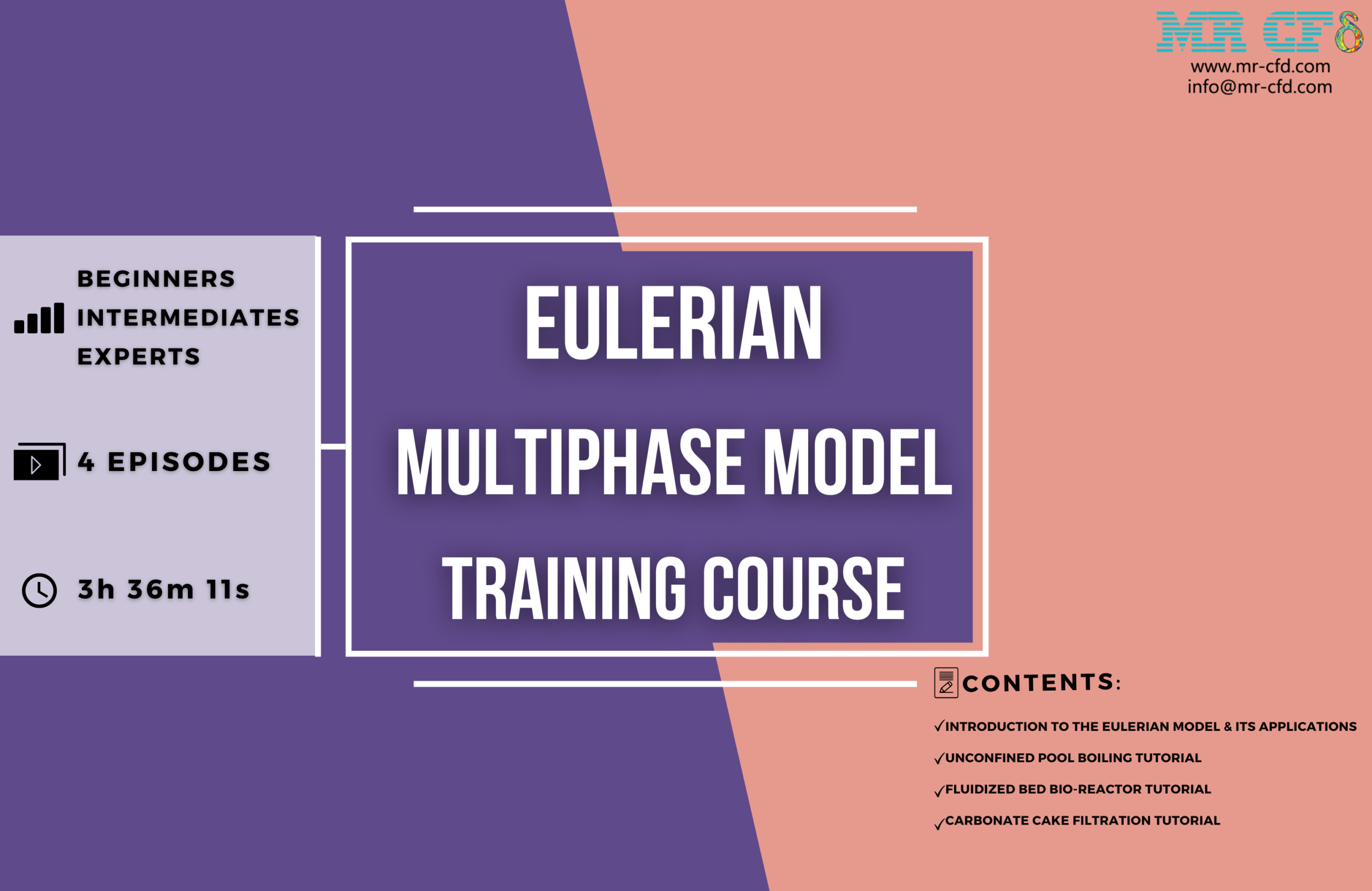
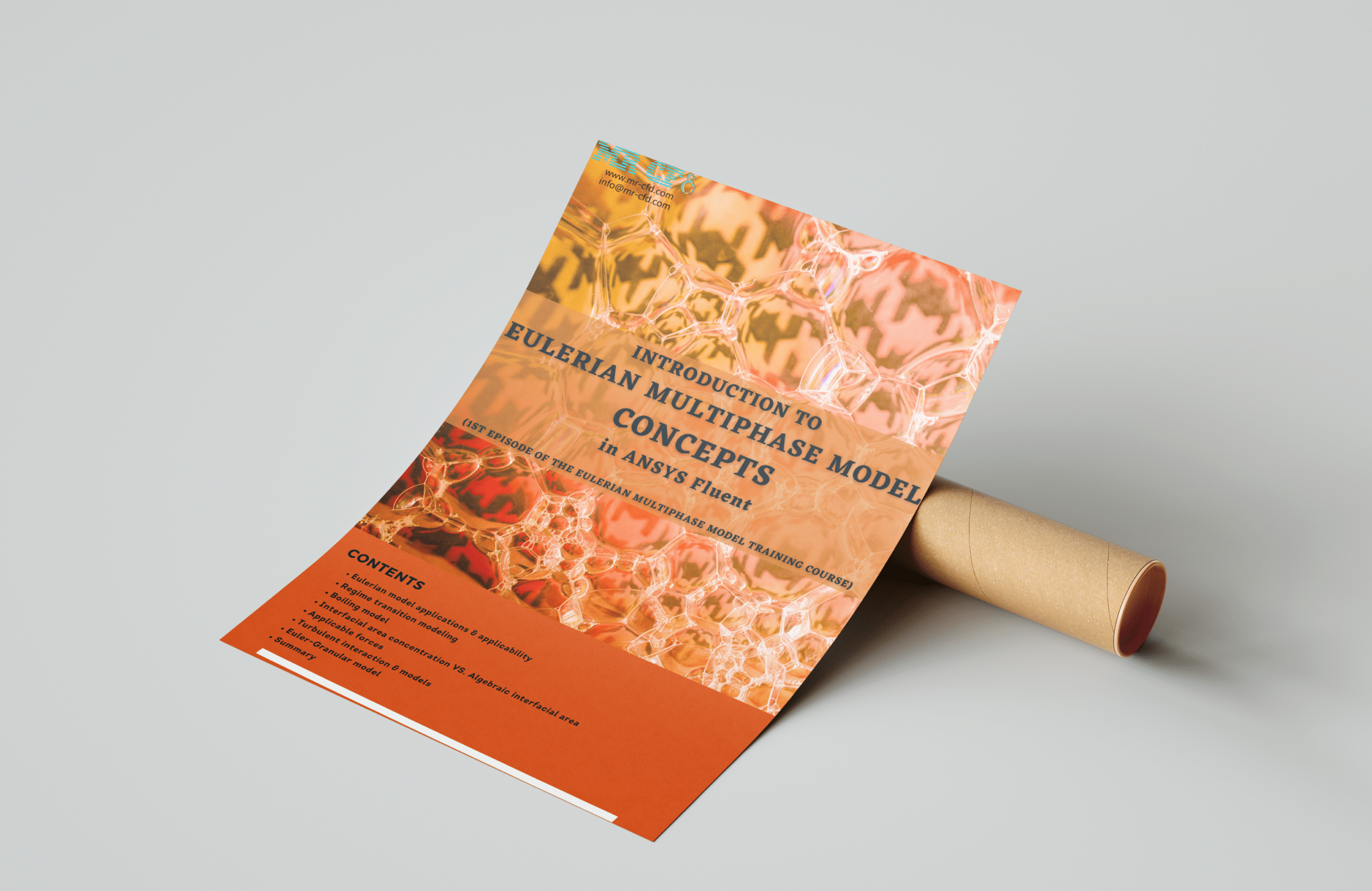
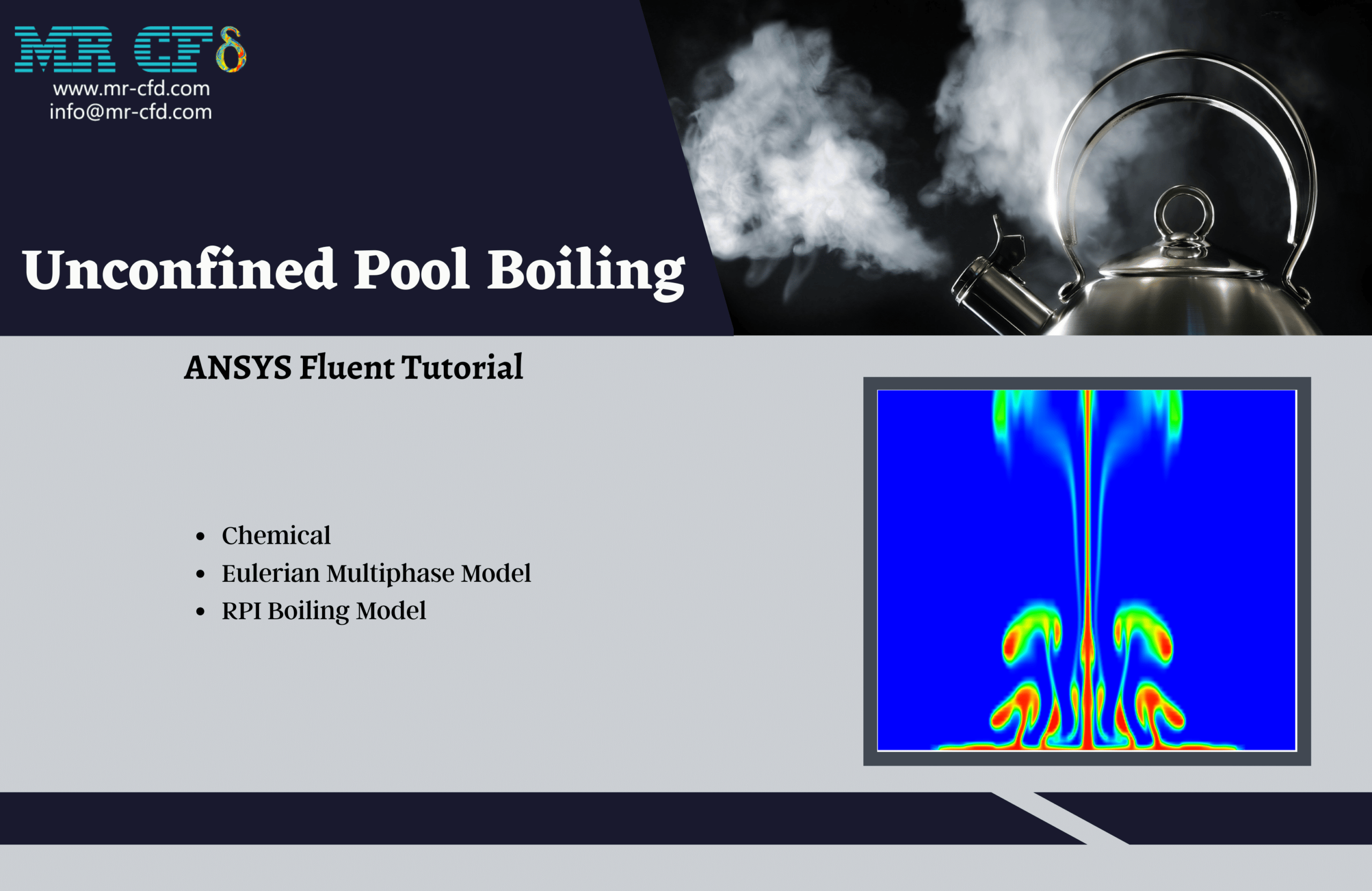
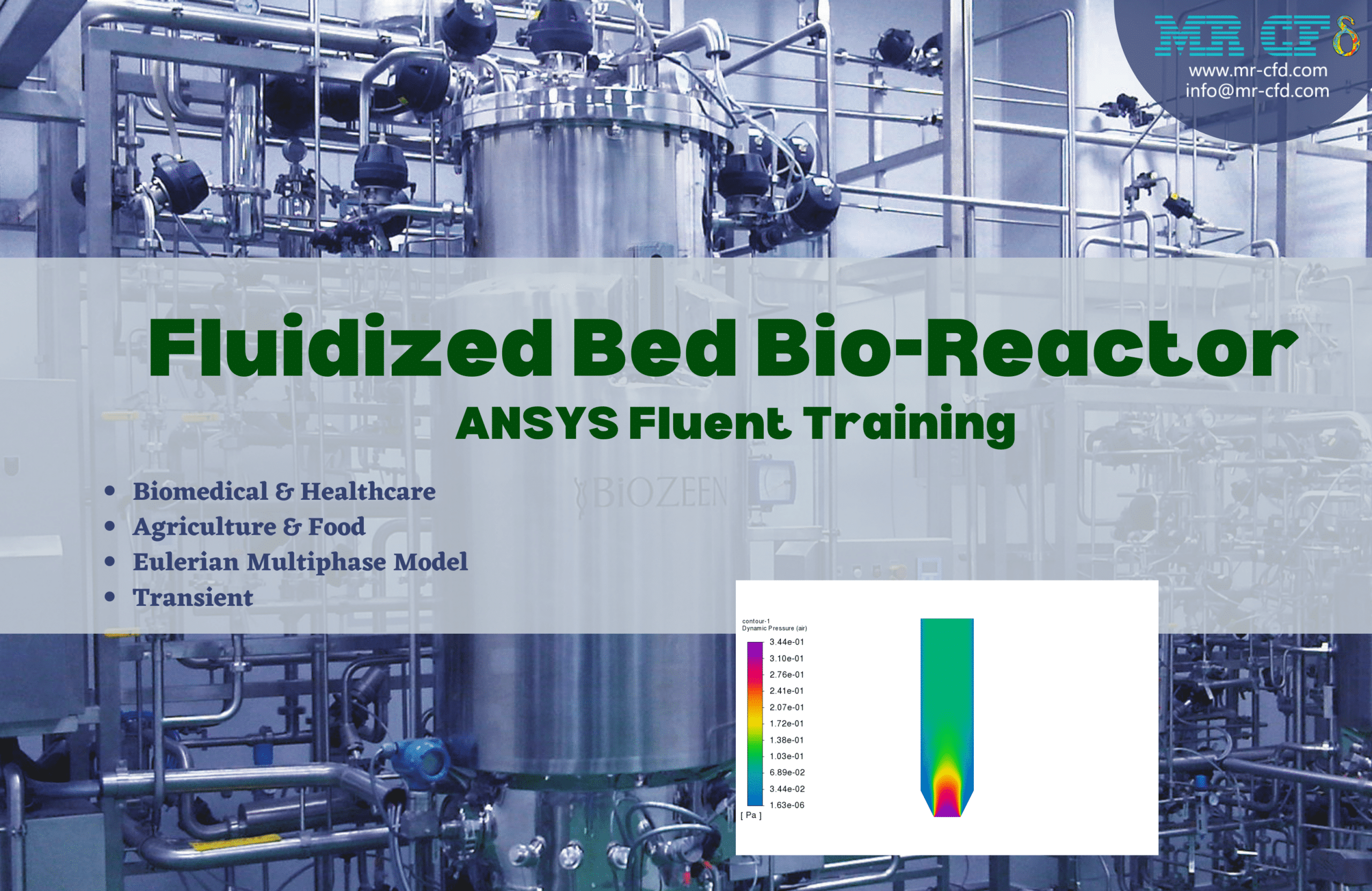
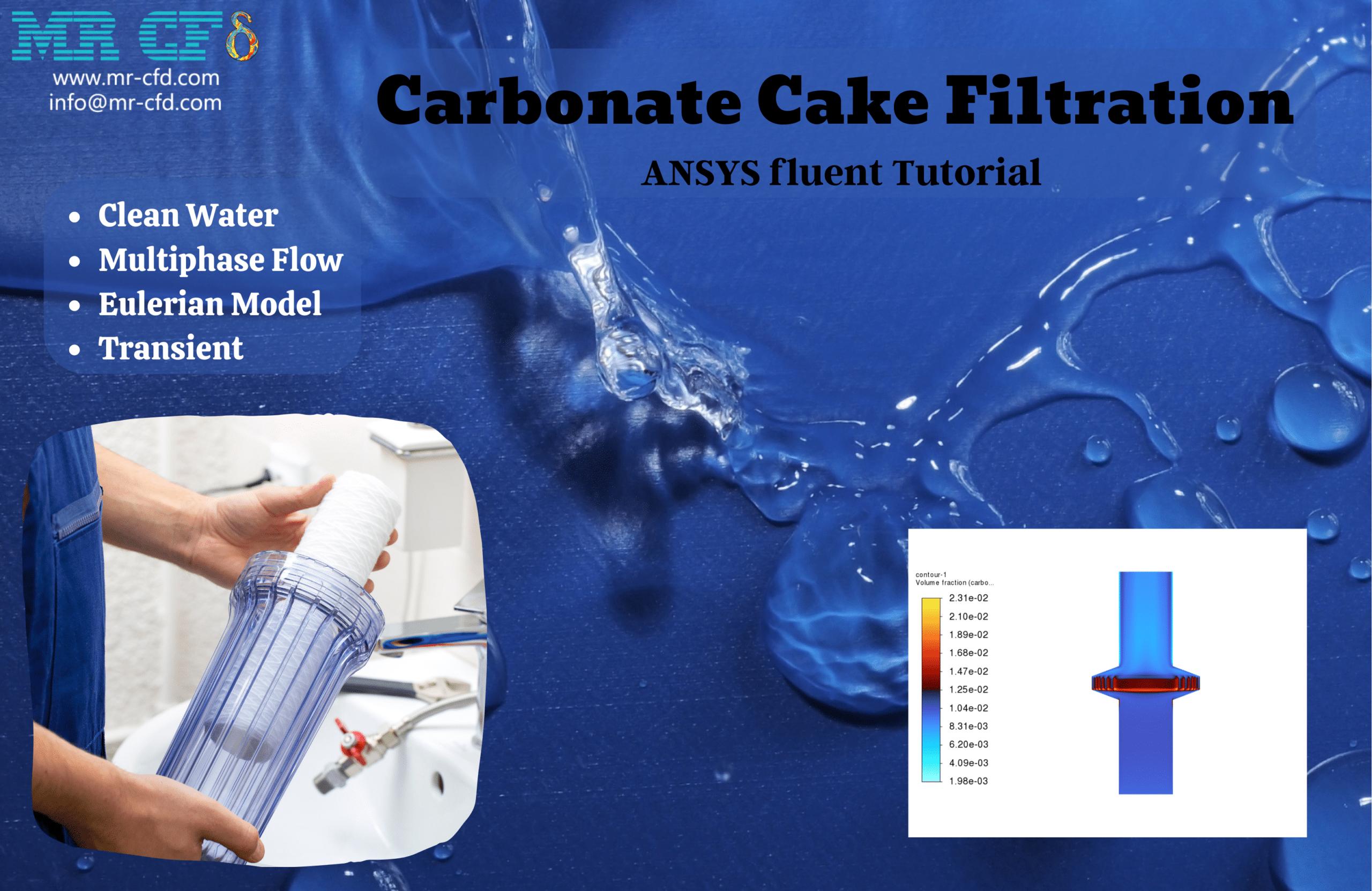
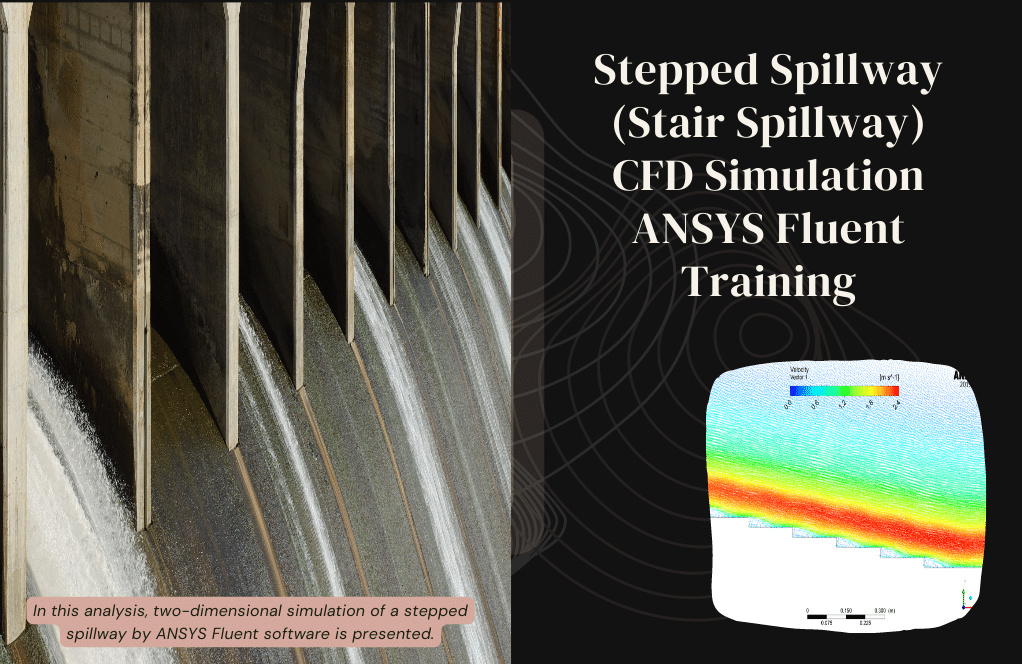


Karley Koch –
I just finished the Eulerian Multiphase Model Training Course and wanted to say it was a fantastic learning journey. The way each lesson built on the previous one really helped me grasp the complex concepts of multiphase flow. Concrete examples like the pool boiling and bio-reactor really brought the theory alive. It was particularly intriguing to see the application of granular flow models in practical scenarios like the carbonate cake filtration!
MR CFD Support –
Thank you for your kind words and the positive feedback on our Eulerian Multiphase Model Training Course! We’re so pleased to hear you found the content engaging and educational. Don’t hesitate to reach out if you’d like to dive deeper into any other CFD topics. We look forward to assisting you in your continued learning journey!
Prof. Jamison Keebler II –
The Eulerian Multiphase Model training course provided an insightful understanding of the dynamics of multiple fluid phases. I especially appreciated the lesson on unconfined pool boiling as it cleared many of my previous misconceptions. The practical examples and tips for obtaining correct numerical results were particularly helpful. Thank you for an incredible learning experience.
MR CFD Support –
We’re thrilled to hear that you found our Eulerian Multiphase Model training so valuable, especially the lesson on unconfined pool boiling. Our goal is always to provide in-depth insight with practical examples. We appreciate your positive feedback and thank you for choosing our course for your learning path.
Murray Moen –
I completed the ‘Eulerian Multiphase Model Training Course’ and I found it incredibly insightful. The breakdown of concepts in the syllabus made complex topics accessible and the practical examples were highly useful for understanding how the model behaves in different scenarios. Could the course include more industry-specific applications in future updates?
MR CFD Support –
We are thrilled to hear that you found the course insightful and the examples helpful for understanding the multiphase flows. Including more industry-specific applications is a valuable suggestion, and we will consider incorporating it in future updates of the course. Thank you for your feedback!
Amya Roberts –
I have just finished the Eulerian Multiphase Model Training Course and I’m impressed by how thoroughly it explained complex concepts like AIAD, GENTOP, and the boiling model. Everything was very logically organized and the practical examples were incredibly helpful. Great job!
MR CFD Support –
Thank you for your positive feedback! We are thrilled to hear that you found the Eulerian Multiphase Model Training Course informative and that the content was presented in a way that resonated with you. We strive to provide comprehensive and applicable knowledge in our courses, and we’re glad it met your expectations. Your enthusiasm for the course is deeply appreciated!
Elmer Hirthe –
The training course helps to familiarize students with the Eulerian multiphase approach in ANSYS Fluent, but does it cater to beginners or is prior CFD knowledge a prerequisite?
MR CFD Support –
The Eulerian Multiphase Model Training Course is designed to cater to a range of students, from those with basic understanding to advanced users of CFD. It provides a comprehensive introduction and demonstrates practical examples that should help beginners get started, while more advanced users can delve into the subtleties of setting up and running complex multiphase simulations.
Santos Corwin –
This training course seems very in-depth. After completing these lessons, will I be able to set up and simulate my own Eulerian multiphase models for different scenarios?
MR CFD Support –
Absolutely, this training course is designed to equip you with the theoretical background and practical skills necessary to set up and run Eulerian multiphase models in ANSYS Fluent for various scenarios. You will also learn to handle complex simulations like boiling and granular flow, as presented in the course’s practical examples.
Van Dickinson –
The training for the Eulerian Multiphase Model Course sounds in-depth and comprehensive. The boiling, bio-reactor, and carbonate cake filtration examples seem especially practical for real-world applications. Additionally, the mention of a certificate upon completion of the course is a great motivator.
MR CFD Support –
We appreciate your positive feedback! It’s wonderful to hear that you find the course content in-depth, with practical examples that clarify complex concepts. We’re also pleased to hear the inclusion of a certificate is motivating for our learners. Thank you for choosing our course, and we look forward to your continued learning journey with us!
Timmy Denesik –
I completed the Eulerian Multiphase Model Training Course and wanted to say how clear and comprehensive the content was. The real-world examples in the lessons made the concepts easier to grasp and the final project really tied everything together. Thanks for a great learning experience.
MR CFD Support –
Thank you for your kind words! We’re thrilled to hear you found the Eulerian Multiphase Model Training Course comprehensive and clear. It’s fantastic that the real-world examples and project helped reinforce your understanding. If you have any more feedback or need further assistance in your learning journey, please don’t hesitate to reach out!
Prof. Emiliano Barton –
The course looks compressive and informative. Does the training address challenges one might face during multiphase model simulations and how to troubleshoot them?
MR CFD Support –
Yes, our Eulerian Multiphase Model Training Course is designed to address common challenges when setting up and running multiphase simulations. Specifically, in Lesson 2 and Lesson 3, the challenges of boiling simulations and granular material behavior are discussed, including providing tips and troubleshooting strategies to obtain correct numerical results.
Willow Langworth –
The Eulerian Multiphase Model Training Course seems quite advanced and resourceful. Could you please tell me if there are any prerequisite knowledge or courses needed before I can dive into it effectively?
MR CFD Support –
Before starting the Eulerian Multiphase Model Training Course, it is helpful to have a fundamental understanding of computational fluid dynamics (CFD), basic experience with ANSYS Fluent, and familiarization with mathematical concepts underlying multiphase flows. If you’re new to these topics, we recommend introductory courses in CFD and ANSYS Fluent to build a solid foundation for the advanced material covered in this course.
Guy Stehr –
I found the course extremely comprehensive, especially the practical examples provided in lessons 2 and 3. I feel confident to tackle real-world problems now with the Eulerian multiphase model.
MR CFD Support –
Thank you for your positive feedback! We’re thrilled to hear that our Eulerian Multiphase Model Training Course has given you the confidence to apply these skills to real-world scenarios. It’s great to know that the practical examples were beneficial for your learning journey. Remember that practice is key, and don’t hesitate to reach out if you have any further questions as you apply these models in the field.
Madeline Mosciski –
This training course appears to be really comprehensive, covering different applications and models under the Eulerian Multiphase category. I’m curious though, does it offer any hands-on exercises to apply what’s learned after each lesson?
MR CFD Support –
The Eulerian Multiphase Model Training Course includes practical examples and final projects where you can apply the concepts learned in the lessons. After each theoretical session, hands-on sessions help to solidify your understanding by allowing you to work through actual simulations under guidance.